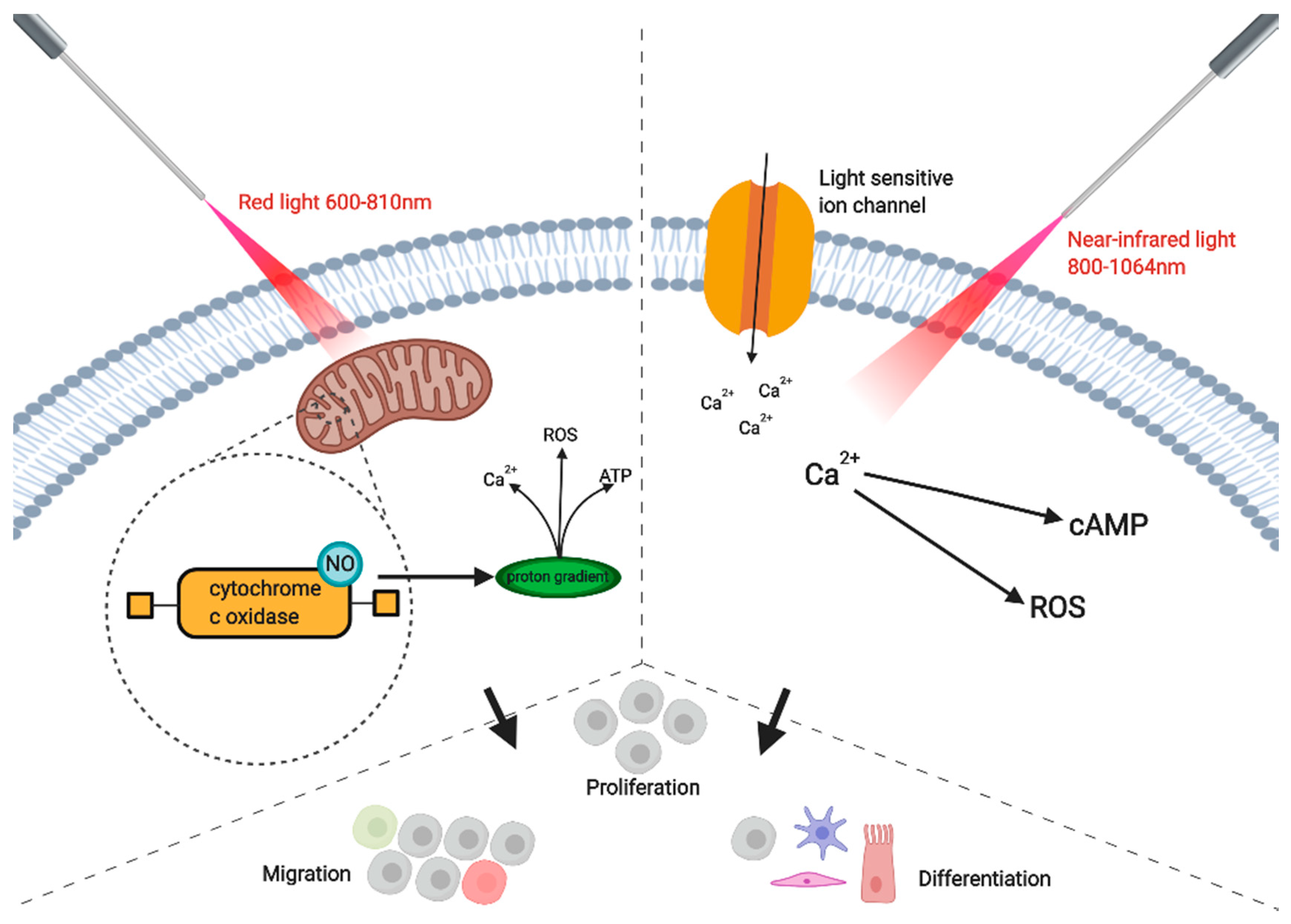What Does Photobiomodulation Do?
Wiki Article
The Definitive Guide for Photobiomodulation
Table of ContentsThe Facts About Photobiomodulation Revealed10 Simple Techniques For PhotobiomodulationExcitement About PhotobiomodulationThe Greatest Guide To Photobiomodulation
Laser therapy is a medical treatment that makes use of focused light to stimulate a procedure called. Throughout PBM, photons enter the tissue and communicate with the cytochrome c complicated within mitochondria. This interaction activates a biological cascade of events that leads to a rise in mobile metabolism, which can in addition to accelerate the recovery process.There is consensus that the application of a therapeutic dosage of light to impaired or inefficient tissue leads to a mobile reaction moderated by mitochondrial mechanisms. Photobiomodulation. Researches have actually revealed that these modifications can influence pain and inflammation, along with, tissue repair
Changes in ATP, reactive oxygen types and nitric oxide follow light absorption by Cc, O. These impacts are redox state and dosage dependent.

Photobiomodulation Fundamentals Explained
PBM tools have actually been gotten rid of for marketing by FDA through the Premarket Notification/510( k) process as adjunctive devices for the temporary alleviation of pain. These clearances were based upon the discussion of scientific data to sustain such cases (Photobiomodulation). In this treatment, a source of light is placed near or touching the skin, enabling the light energy (photons) to permeate tissue where it connects with chromophores situated in cells leading to photophysical and photochemical modifications that lead to changes at the molecular, cellular and cells levels of the bodyRemarkably, current research study indicates that light can boost efficiency in typical tissues and cells. The possible applications of PBMT are various and are being checked out experimentally at the fundamental scientific research, pre-clinical and scientific level. The existing clinical uses are for the alleviation of pain and swelling and the treatment of sporting activities injuries.

The treatment specifications and variety of sessions required for PBMT depend on area and reason. PBMT normally calls for greater than one therapy for optimum pain relief. It might take a number of therapies for the outcomes to come to be apparent. reports that it can take anywhere from eight to 30 sessions for a treatment to be completely efficient, and some people locate it essential to undertake treatment two to four times per week.
Rumored Buzz on Photobiomodulation
Treatment specifications for PBMT were originally developed using cells artificial insemination and in small pet models. These therapy specifications usually had a low irradiance and fluence and functioned well for cutaneous applications. When clinicians started to make use of PBMT to treat frameworks that were situated much deeper in the body, they utilized these criteria with adverse results.
We currently comprehend that these negative studies was because of wrong gadget and therapy parameters for transcutaneous treatment of deeper frameworks. Recent advancements in laser therapy tools and more research study into the official source proper does have actually considerably improved the outcomes of PBMT. For dealing with deep cells, the wavelength of light made use of figures out the deepness of penetration into a tissue.
It is vital that a clinician uses the suitable wavelength of light and parameters to treat a problem. One wavelength and one set of treatment criteria will certainly not work for all conditions. Adverse side effects have not been reported from using PBMT (Photobiomodulation). Updated June 27, 2016Juanita j
Light treatment is a non-invasive treatment that functions by boosting the capability of the cell to create power (ATP) to recover the location being dealt with. As an outcome, it can reduce inflammation, swelling, and pain in the area. Research in this field is broadening, with more in-depth research documents connected listed below for those who would love to find out a lot more.
special info
The 4-Minute Rule for Photobiomodulation
In the very first experiment, Dr. Endre Mester, used cut rats and observing how the laser impacted their ability to expand hair contrasted to the group that was not obtaining LLLT. He located that the group of computer mice receiving LLLT had the ability to grow their hair back more promptly than the group of computer mice that really did not get LLLT (Hoon C, et al; 2012).This treatment is termed this means to separate the distinction in between the lasers some professions utilize to reduce (eg. Low-level light therapy is painless, non-invasive treatment.
LLLT has a biphasic action, meaning that reduced doses are typically attended be extra useful than greater dosages. That being claimed, dosages higher or reduced than the ideal dose does not influence (Hoon C, et al; 2012). Because of this, it can be tough to have researches on LLLT with numerous parameters.
Some business incorporated both (LED and laser) to give an extra all-around treatment considering that lasers can pass through much deeper than LED and infrared light (Norman Doidge, The Mind's Way of Healing, 2015). During therapy, the location that is being dealt with is exposed to LED light from a Bio, click here to find out more Flex Laser, which is at 660 nm wavelength, followed by infrared light at 830-840 nm wavelength.
Report this wiki page